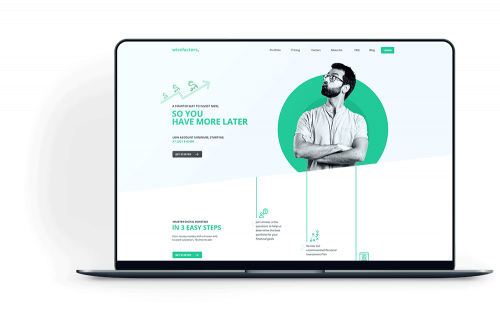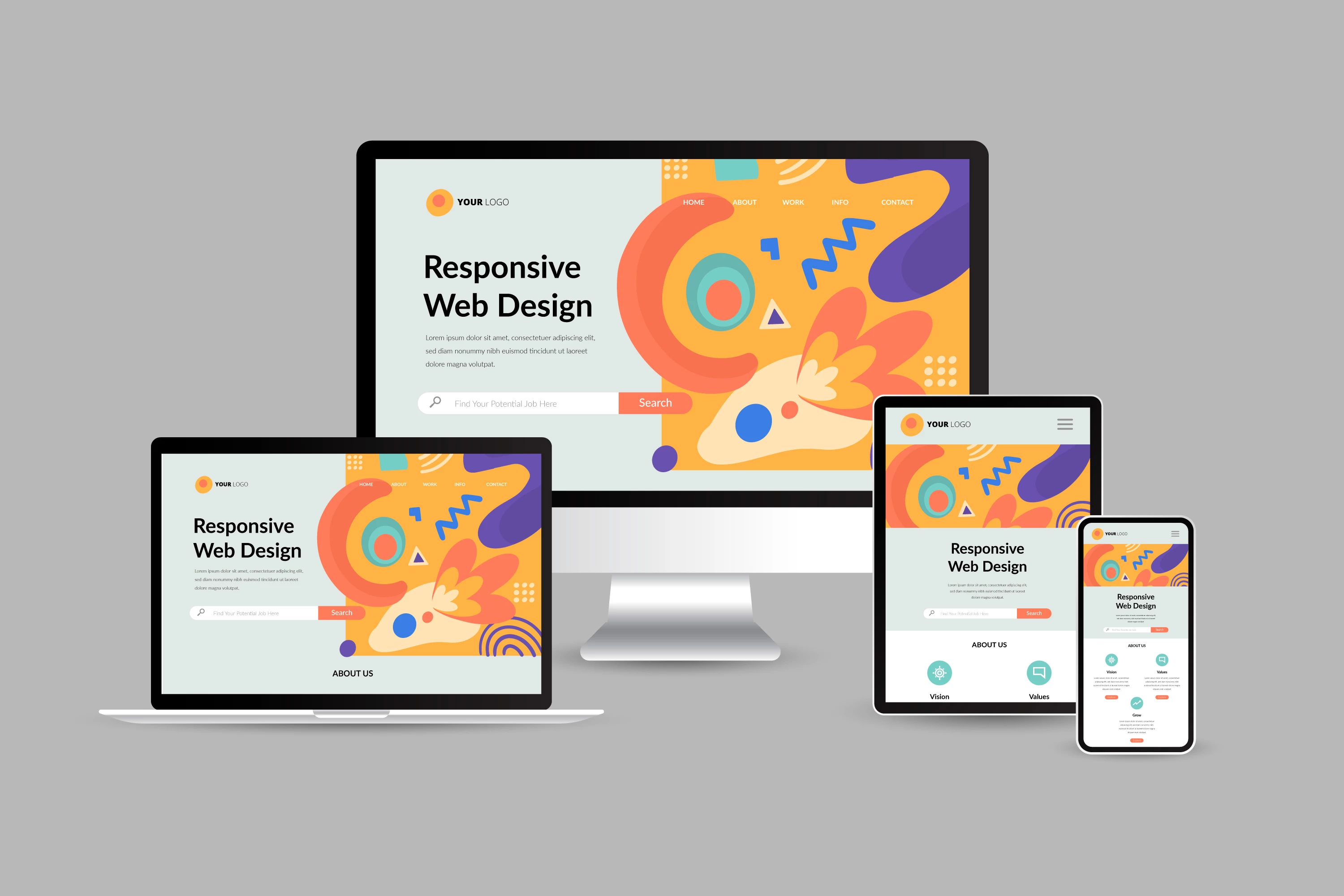Top Trends in Modern Website Design for 2024
Top Trends in Modern Website Design for 2024
Blog Article
The Power of User-Centered Website Layout in Growing Your Online Audience
Effective design principles-- such as instinctive navigating and accessibility-- are crucial in cultivating customer fulfillment and loyalty. What techniques can companies embrace to ensure their designs reverberate with individuals and ultimately drive growth?

Recognizing User-Centered Design
User-Centered Design (UCD) is a fundamental approach to website growth that focuses on the demands, choices, and habits of end individuals throughout the style process. This method emphasizes recognizing individuals deeply-- with research methods such as meetings, surveys, and usability testing-- to develop an internet site that reverberates with them. By integrating user feedback at every stage, designers can make certain that the end product aligns closely with customer expectations.
UCD advertises iterative layout, where models are checked and refined based on customer interactions and experiences. This cycle not only improves functionality but also cultivates a sense of ownership among individuals, as they feel their input is valued and impactful. Furthermore, UCD helps recognize prospective obstacles and discomfort points in the individual trip, allowing developers to attend to these challenges proactively.
Inevitably, accepting UCD leads to sites that are more instinctive, engaging, and reliable. By placing customers at the center of the layout procedure, organizations can produce digital experiences that not just draw in yet also keep their target market, driving higher satisfaction and commitment. In an affordable online landscape, this strategy is vital for accomplishing continual success.
Secret Concepts of User Experience
A successful customer experience (UX) hinges on numerous crucial concepts that guide the style procedure and enhance interaction in between customers and the site. Usability is vital; the site needs to be instinctive, allowing users to browse quickly and locate details rapidly. This includes clear labeling and a sensible structure that lessens cognitive load.
Second of all, availability plays a critical role in making sure that all customers, regardless of their capabilities or specials needs, can successfully engage with the website. Incorporating alt message for photos, key-board navigation, and screen reader compatibility promotes inclusivity.
Uniformity is one more vital concept. A natural style language, from color pattern to typography, aids users develop experience and trust fund with the internet site (Website Design). It also reinforces brand identification
Additionally, responses mechanisms are vital. Users must obtain clear and prompt actions to their actions, whether through visual signs or verification messages, which improves their self-confidence in navigating the site.
Last but not least, mobile responsiveness can not be forgotten. With an enhancing variety of individuals accessing sites by means of mobile phones, a design that adjusts flawlessly to various display sizes is essential for preserving a positive customer experience.

Advantages for Online Interaction
Effective online involvement uses many benefits that can dramatically enhance a website's total performance - Website Design. By cultivating significant interactions between customers and the web site, organizations can cultivate a dedicated target market that returns with regularity. Engaged customers are a lot more most likely to share material, thereby raising organic reach and drawing in brand-new visitors through word-of-mouth promo
Improved online interaction likewise causes improved user fulfillment. When users discover a website that resonates with their requirements, they are extra inclined to explore its offerings thoroughly, which can cause greater conversion rates. Furthermore, engaging material motivates customers to spend more time on the website, minimizing bounce rates and favorably influencing search engine ranking algorithms.
Furthermore, efficient involvement offers invaluable insights into user preferences and behaviors (Website Design). By assessing user interactions, organizations can tailor their material and style methods to meet the advancing expectations of their target market. This flexible technique not only improves interaction however also reinforces the brand's credibility as user-centric and responsive
Inevitably, prioritizing on the internet involvement via user-centered layout develops a growing ecosystem where both the target market a knockout post and the company benefit, resulting in sustained growth and success in the digital landscape.

Methods for Reliable Layout
To make best use of the advantages of online involvement, utilizing get redirected here certain methods in web site layout is paramount. First, user-friendly navigation is vital; customers should easily find information without confusion. A well-structured food selection, clear tags, and a rational power structure enhance the user experience and reduce bounce rates.
2nd, receptive style is vital in today's multi-device setting. Making certain that a website adapts seamlessly to various display dimensions promotes availability, thus fitting a wider audience. This flexibility not just enhances individual complete satisfaction but likewise favorably influences search engine rankings.
Third, using visual power structure overviews users' attention to important elements, such as phone call to activity (CTAs) Employing contrasting shades, varying font sizes, and strategic spacing can effectively route individuals toward preferred actions, promoting higher interaction.
Additionally, applying constant branding across all web pages builds trust fund and recognition. A natural shade typography, system, and imagery reinforce brand name identity and produce a professional look.
Lastly, maximizing loading rates is important. Customers are less most likely to involve with a slow-loading site, making efficiency optimization a crucial element of reliable style. By including these techniques, web site creators can improve customer experience and ultimately expand their on the internet audience.
Real-World Success Stories
Success stories in user-centered website design illustrate the tangible advantages of prioritizing user experience. As a result, they experienced a 250% increase in on the internet contributions, showing exactly how an instinctive design can drive user engagement and support.
Another compelling situation is that of Airbnb, which made use of user-centered layout concepts to boost their reservation procedure. By streamlining the user journey and integrating individualized suggestions, they dramatically lowered website desertion rates. This concentrate on customer experience contributed to an income development of over 70% in a single year, underscoring the correlation between properly designed user interfaces and economic success.
Additionally, the ecommerce titan, ASOS, executed customer testing to fine-tune their mobile application. By attending to individual pain points, they accomplished a remarkable 30% boost in mobile sales. These examples highlight that buying user-centered design not only improves user fulfillment but likewise drives concrete service outcomes, reinforcing the essential duty of customer experience in attaining online growth.
Verdict
To conclude, informative post user-centered website layout works as an essential approach for enhancing on-line audience interaction. By prioritizing customer requirements and preferences, organizations can develop available and instinctive electronic experiences that foster loyalty and drive conversions. The integration of user comments throughout the layout procedure not just decreases bounce rates yet likewise urges expedition. Eventually, adopting effective user-centered design concepts can substantially add to an organization's success in an affordable digital landscape.
User-Centered Style (UCD) is a fundamental strategy to web site development that focuses on the requirements, preferences, and behaviors of end customers throughout the design procedure. By incorporating user feedback at every phase, designers can guarantee that the final product straightens closely with customer assumptions.
A successful customer experience (UX) hinges on a number of crucial concepts that direct the layout procedure and boost interaction between customers and the web site.Success tales in user-centered site layout illustrate the substantial benefits of prioritizing user experience. These instances highlight that investing in user-centered design not only boosts customer contentment however likewise drives concrete organization outcomes, reinforcing the important role of individual experience in accomplishing on the internet development.
Report this page